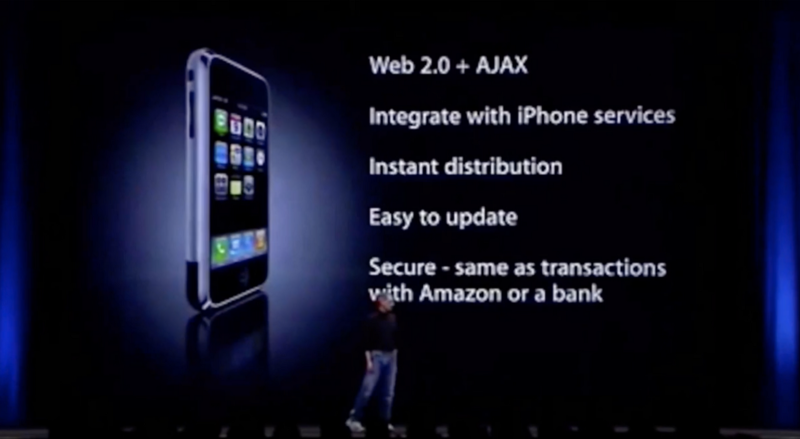Latest news about Bitcoin and all cryptocurrencies. Your daily crypto news habit.
 Source: Comscore
Source: Comscore
Are you a business owner looking to create an application platform for customers? If so, then there would definitely be a lot of things on your mind right now. How to develop an app for both Android and iOS in the most efficient manner? What types of apps can be developed for your business? So on and so forth.
All answers to these questions will anyway lead to making a choice between two well-known types of mobile applications: Native Mobile app and Hybrid mobile app. To cut it short: A native mobile app is useful if you have no constraints on budget, and want to leverage all performance advantages offered by the native languages supported by the mobile OS, i.e., Objective-C for iOS and Java for Android.
A hybrid app, on the other hand, is tremendously useful if you don’t want to spend efforts on hiring specialized developers working the native languages supported by the OS platforms. It essentially combines the features of a web app and a native app through the creation of a web app using HTML, CSS, and JavaScript; and subsequently wrapping it into a native app container. This implementation would take fewer resources, is open to more customizations and could simultaneously be updated for use in multiple platforms.
While it’s generally said that native apps perform a lot faster than the hybrid ones. The use of new development environments and frameworks such as React Native and Xamarin have progressed far enough to narrow the gap in performance of Hybrid apps in comparison with those developed in Objective-C, Swift or Java.
In a nutshell, the choice of the type of mobile app doesn’t really matter if there are no budget constraints and if a tiny bit of performance boosts accessible through a native app is vital. However, if ROI is a priority, then there’s no better choice than Hybrid app development.
Enter Progressive Web Apps
Progressive web apps were first introduced by Google about 3 years ago. What makes it so different from native apps is that it’s just a web app within the shell of a native app, yet can do almost everything that an app can perform, all without consuming device storage and having an accessibility from home screen just like a regular mobile app.
So what are Progressive web apps? Essentially, a Progressive Web App or PWA is what you get when you put a web app into a browser with an interface similar to a native app and make it accessible by providing the option to place it on homescreen. It consumes less storage space because of its presence within the browser and not through an installation in an app store.
Then you make it accessible offline, have it gain access to important device hardware for performing app-like functions (push notifications, access to camera and the like), and the ability to share it with others through a simple mobile URL. Voila! Here’s a web app which performs and is accessed like a native app, yet doesn’t need to be installed and stored inside a smartphone.
Progressive web apps create an entirely new way to access apps on a smartphone. Though on the surface, its potential doesn’t seem to be that huge because most users have already adapted to the practice of discovering new apps from online stores, installing and then using it as they prefer.
PWAs seem to put a halt on this adoption, and instead make users switch back to mobile browsers for accessing services and social media. However, what’s different is that unlike native or the current set of hybrid apps, its interface opens in a browser. Thereby making the web browser the body of all the PWAs.
What would be the role of PWAs in hybrid mobile app development
While PWAs are generally considered different from Native and hybrid apps. The present developments in this scene make me feel that it would have a stage similar to latter ones or perhaps even overtake them. That’s because this field is only making more progress, and in the end, it may overcome even the existing limitations that it has against a native or hybrid app.
Also, Google is not the only company working on PWAs. Perhaps, it must be mentioned that Google isn’t the first one working on it either. Something similar to PWAs was suggested by the late Steve Jobs back in 2007 along with the launch of the first ever Apple iPhone. Since then, this idea was only considered to be that of a web app placed and accessible on a home screen.
Also read: Progressive Web Apps on iOS are here 🚀

Apple seemed to have forgotten about it with the launch of App store and the subsequent mobile app revolution. But Google, through PWA is strengthened its scope of implementation and several aspects of its functionality.
PWAs have also been tried on iOS devices recently, and it appears that it will stay for a long time to come. Once considered as a limitation, PWAs are not available through app stores, unlike the conventional mobile apps. However, with a player such as Microsoft trying PWAs for Desktop users in its Microsoft store, Google and Apple could try to introduce them on the mobile application markets of the iOS and Android ecosystems as well.
The greatest advantage of Progressive web apps here is the fact that neither does it have the need for expertise in one particular language as in the case of Native mobile apps, and most of it can be easily developed with the common technologies of HTML5, CSS, and JavaScript similar to a Hybrid Mobile App.
It can actually be easily considered as a branch of Hybrid app development in the future. Though it only seems suitable for low-budget businesses as of now, when viewed from both the business and consumer perspective; it does make a lot of sense.
For the businesses, it offers cheap development costs and a flexible platform for upgrading in the future. For the customers, it not only provides a lighter and faster platform to access services, but can also be accessed offline just like any normal app. Most importantly, it takes away the need for installation of apps on a smartphone and hence negates many threats in security and device functioning caused by a rogue mobile app!
What do Progressive Web Apps mean for Hybrid App development? was originally published in Hacker Noon on Medium, where people are continuing the conversation by highlighting and responding to this story.
Disclaimer
The views and opinions expressed in this article are solely those of the authors and do not reflect the views of Bitcoin Insider. Every investment and trading move involves risk - this is especially true for cryptocurrencies given their volatility. We strongly advise our readers to conduct their own research when making a decision.

